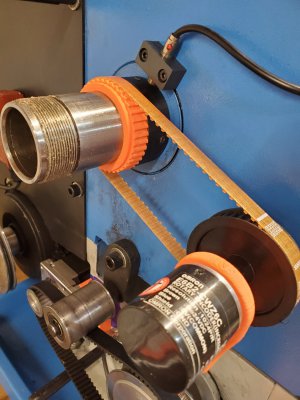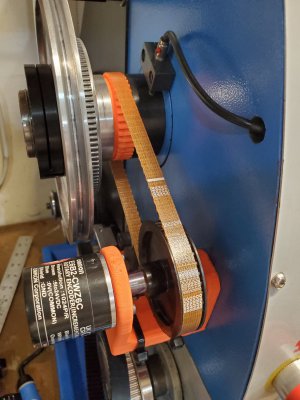I decided to try a 3d printed spindle gear to fit a T5 timing belt.
It was easy to find parametric code for T5 gear generation. Problem was that the code was written for openSCAD. Which I don't know. So I downloaded the CAD program and the gear generator. It was quite easy to modify the program to generate the gear that I needed. Their example had 8 teeth, I increased it to 40 teeth. They had a flange (retainer) which I set to zero and turned off. At this point, it was almost what I wanted. I still needed to add a keyway. And increase the thickness by 3mm. Time to move it over to Fusion 360.
But unfortunately, there's not a common format between the two pieces of software. There's some talk about using FreeCAD to bridge between them.....but that's starting to get too darn complicated. Instead, I found that adding a "projection" statement at the top of "main" allows changing the output of the SCAD stuff from 3D down to 2D (a dxf file). Once I had a dxf, Fusion could extrude the gear splines 12mm, extrude a non-splined 3mm spacing section, and add the keyway.
I switched back to a .4mm nozzle in my 3d printer and printed the piece. Initially too tight on the bore (ID), so I sanded the interior lightly and got it to fit.
View attachment 471874View attachment 471876
I may reprint this part with two tiny changes. First, make the bore a bit bigger and eliminate the "sand to fit" step. Second, there's no reason not to make the toothed area the full 15mm width. It seems to run smoothly and true on the gears w/o any tendency to run off either end....but it can't hurt to have the extra 3mm of width on the gear.
Contrary to my earlier concerns about durability, I now think this plastic gear should last many years.



